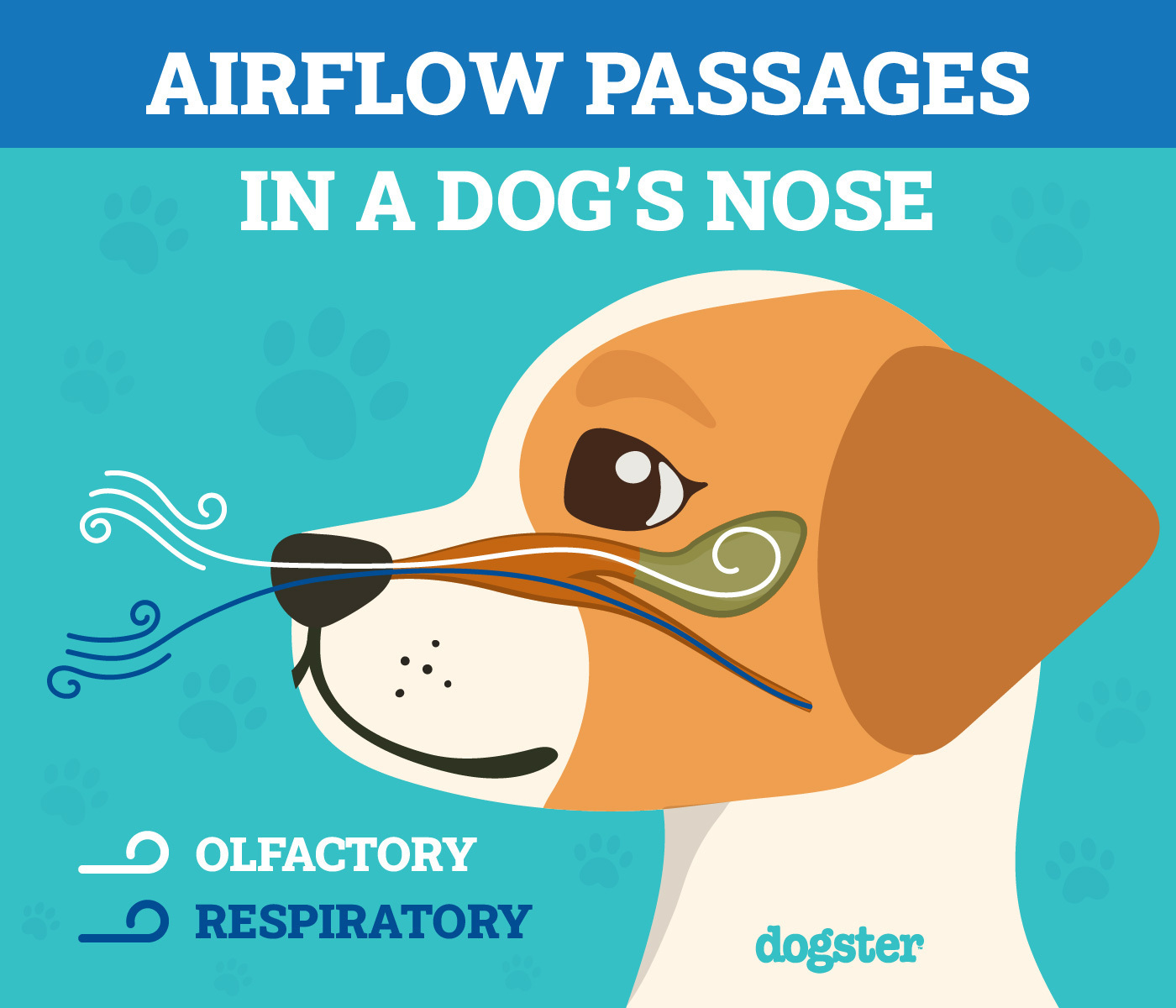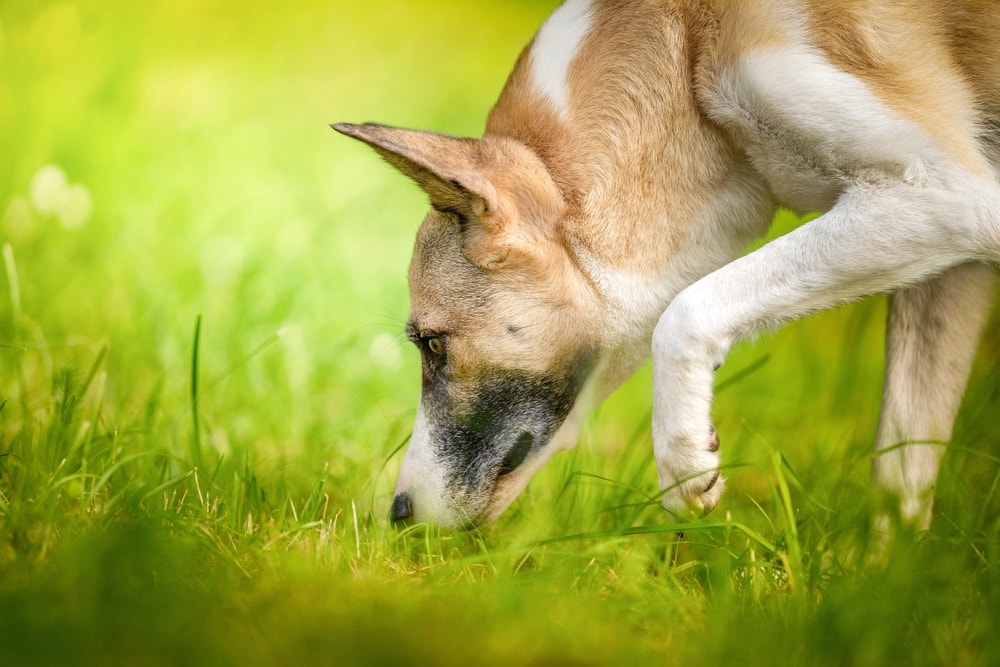A canine’s nose is more impressive than many people realize. Dogs use their noses to navigate and determine so many things about their surroundings. Humans have relied on the incredible scent-detecting abilities of the canine nose for centuries, for tracking, patrolling, and identifying. Furthermore, dogs have an incredible smell memory, and they use this to recognize people. A dog’s ability to pick up a scent is a true superpower.
So, surely with that kind of ability, not even something buried can go unnoticed. But how deep underground can a canine’s powerful nose smell? Dogs can pick up a scent from 40 feet below the ground, but certain factors influence this distance.
Let’s have a deeper look at the incredible power of a dog’s nose.
How Good Is a Dog’s Sense of Smell?
Dogs can smell separately through each nostril and will use the odor detected from each nostril to determine exactly where a scent is located. A dog’s nose has the unique ability to separate air from the odor, while a human’s nose smells and breathes at the same time. This makes distinguishing scents for dogs much easier.

A dog’s sense of smell is far superior to ours. Their olfactory bulb is approximately 0.31% of their brain volume,1 whereas a human’s olfactory bulb is only 0.01% of their brain volume. The canine sense of smell is about 100,000 times better than that of humans.
A dog’s olfactory epithelium contains about 225 to 300 million olfactory receptor cells. These highly specific cells are responsible for detecting odors, and each has hundreds of cilia. In comparison, we humans have about 5 million receptor cells in our noses, with only about 25 cilia in each.

Besides an amazing sense of smell, dogs have a special organ known as the vomeronasal organ, which provides them with what some refer to as a second sense of smell. It’s designed for chemical communication. The nerves from the vomeronasal organ connect directly to the brain and do not respond to usual smells. Its nerve cells respond to pheromones, many of which are odorless. The function of pheromones is to change and influence an animal’s behavior, for example, for breeding purposes or to help puppies feel calm and at ease with their mother.
How Far Can Dogs Smell?
We now know how incredible a dog’s sense of smell is, but how far can they smell?
Canines can detect minute changes in odor molecule densities over brief periods. By sniffing the ground, tracking dogs can quickly identify which direction a person or animal has gone. Dogs can even detect human fingerprints that are a week old! They can also detect a scent trail that is 5 to 14 days old,2 and some Bloodhounds can follow a scent trail for up to 130 miles. Environmental factors influence the distance at which a dog can pick up a scent, and certain dogs are more advanced in tracking scent, as they are trained to do so.
The wind speed and direction, temperature, and weather influence how far a dog can smell. When the temperature is hot and dry, dogs can find it difficult to track scents, but when the ground is cooler than the air or there is moisture in the environment, they can track scents easier. Light rain can enhance a dog’s scent, while heavy rain can make scent tracking more difficult. Naturally, the wind will carry scents, so wind direction will also affect how easily a dog can pick up a scent.
A trained dog can detect a scent from 20 kilometers, or 12 miles, away, depending on the weather. However, a hundred yards may be too far if the weather is unfavorable. On a windy day, a dog can probably smell a person upwind from 20 kilometers away.
How Far Can a Dog Smell Something That Is Buried?
A dog’s nose can detect scents as far as 40 feet underground and as much as 80 feet underwater. That said, there were reports of dogs detecting humans under 70 feet of mudslide in Oso, Washington. A well-trained dog can detect odors even through several inches of concrete.
A cadaver dog, or human remains detection (HRD) dog, can detect the scent of remains deep underground, depending on the type of soil, its aeration, and the presence of tree roots in the ground. HRD dogs can detect the scent not only in bodies but also in bone, blood spatter, and cremated remains. They can even detect the smell of a body after it has been removed from a casket.
Dogs can detect a scent within a few minutes of death or several years later. There are reports of HRD dogs discovering 30-year-old remains buried in a 300- by 150-foot area.
Can I Deter a Dog’s Sense of Smell?
If you have reason to bury something in the ground, perhaps bones from a meal the night before, a dead hamster or farm animal, or anything that will emit an odor, your dog will smell it and will likely dig it up. They can also smell pests like moles and rodents, which will encourage them to dig up your garden.
Unfortunately for your dog, their keen sense of smell is both a blessing and a curse. There are smells that dogs hate, which may help deter them from something dangerous. While most of us enjoy the smell of fresh herbs like rosemary and mint, your pup may find them offensive. Planting herbs in the area you don’t want them to dig may keep them away. Apple cider vinegar and white vinegar are both non-toxic and widely used in many households. Since most dogs dislike the strong acidic odor, spraying some around an area may help deter them. Citrus scents are also at the top of the list of smells that your dog may dislike. Lemons, limes, oranges, and grapefruits smell unpleasant to canines because the potency of the citrus odor may irritate their nose.
All that said, this is not a surefire way to keep them from digging up old chicken bones or anything else dangerous.
Summing Up
It’s clear that if dogs were superheroes, their power would be the incredible ability of their noses to pick up scents. It seems that there is no material that dogs can’t sniff through; they can smell through water, soil, and even cement! Their noses can pick up things buried at least 40 feet deep and scents that are weeks old. While there are smells that dogs dislike, one odor is unlikely to mask another, as they can perceive them differently.
See Also:
Featured Image Credit: Pawtraits, Shutterstock












